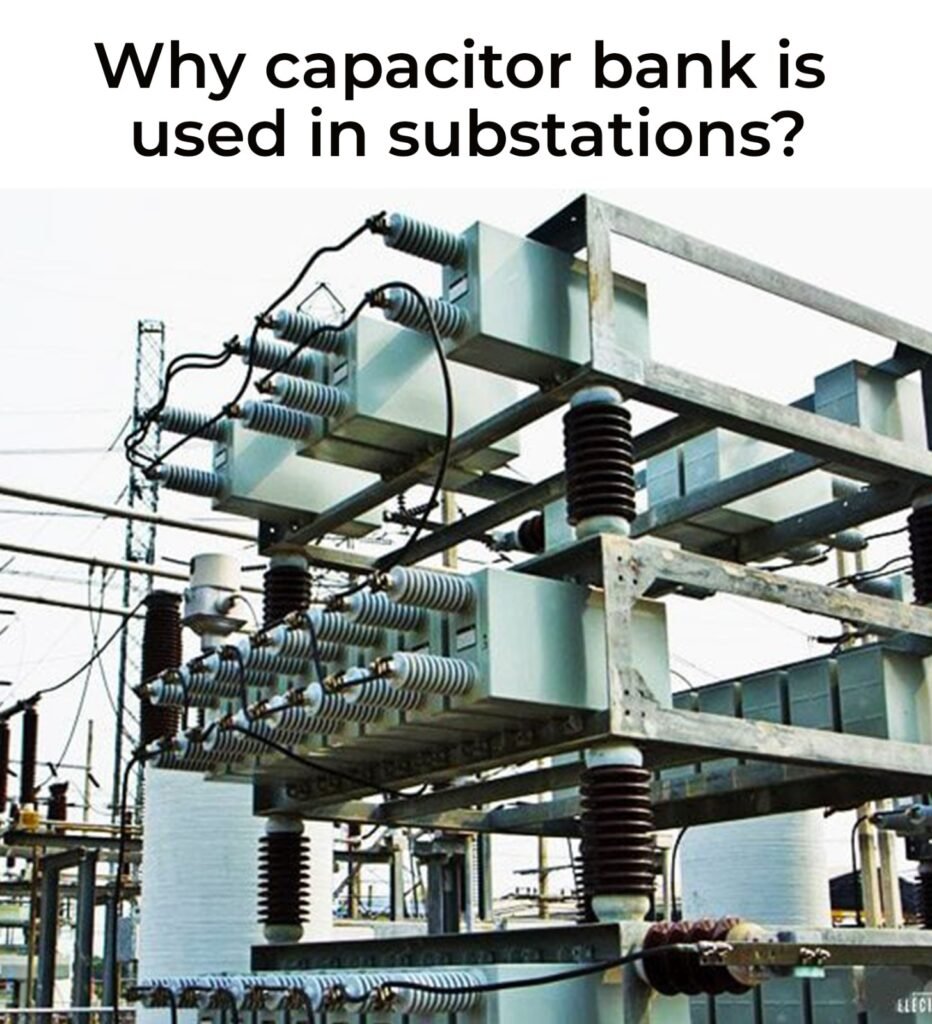Why capacitor bank is used in substations?
Why capacitor bank is used in substations?

A capacitor bank is a group of capacitors that are connected in series or parallel to provide reactive power compensation and power factor correction in a substation.
Capacitor banks are used for several reasons, such as:- Improving the quality and efficiency of the electrical supply by reducing losses, voltage drops, and harmonics¹.
– Increasing the capacity of the system by allowing more load to be connected without overloading the transformers or cables².
– Reducing the cost of electricity by avoiding penalties for low power factor or reactive power demand³.
– Enhancing the stability and reliability of the system by supporting voltage regulation and reducing the risk of voltage collapse⁴.
– Protecting the equipment from damage due to overvoltage or overheating caused by excessive reactive power⁵.Capacitor banks are usually installed at specific points in the system, such as substations or feeders, where they can provide the optimal amount of reactive power compensation for the load or network conditions.
Capacitor banks can be shunt-connected, which means they are in parallel with the load, or series-connected, which means they are in series with the transmission line. Shunt capacitor banks are more common and are used to cancel out or reduce the lagging reactive power caused by inductive loads, such as motors, transformers, etc.
Series capacitor banks are used to reduce the impedance of long transmission lines and increase their power transfer capability⁵.